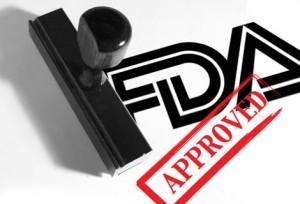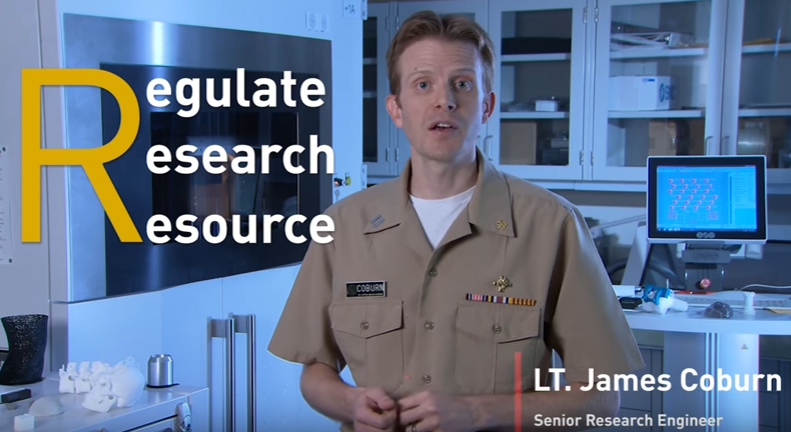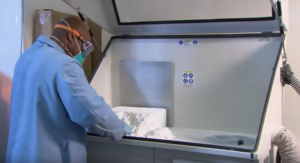 It’s always exciting when 3D printing can play a role in making someone’s life better, and one of the very visible ways it does this is through the medical field, like with this 3D printed ankle fusion system, or this 3D printed titanium digital fusion implant. But you can’t get anywhere with some of these innovations without the all-important clearance from the Food and Drug Administration (FDA). As manufacturers continue to utilize 3D printing in order to create devices with complex internal structures that are better matched to patients’ anatomy, the FDA is working with universities, researchers, and industry to continue learning more about these products, so they can better issue guidance on the continuing medical creations. The organization is now issuing further guidance on 3D printing.
It’s always exciting when 3D printing can play a role in making someone’s life better, and one of the very visible ways it does this is through the medical field, like with this 3D printed ankle fusion system, or this 3D printed titanium digital fusion implant. But you can’t get anywhere with some of these innovations without the all-important clearance from the Food and Drug Administration (FDA). As manufacturers continue to utilize 3D printing in order to create devices with complex internal structures that are better matched to patients’ anatomy, the FDA is working with universities, researchers, and industry to continue learning more about these products, so they can better issue guidance on the continuing medical creations. The organization is now issuing further guidance on 3D printing.
 This comes only a few months after the FDA released new draft guidance for those pursuing medical 3D printing. The agency provided manufacturers with their initial thoughts about the many technical considerations in manufacturing 3D printed medical devices, and on characterizing and validating those types of devices. It also offered testing recommendations. However, the guidance doesn’t apply to the more complex 3D printing and bioprinting processes, like those involving cells and human tissues. The Advanced Medical Technology Association (AdvaMed), and others, submitted their general comments to the FDA on this guidance, some of which include calling for clarity on regulatory expectations for point-of-care 3D printing. AdvaMed also wanted to separate patient-specific devices into a companion guidance.
This comes only a few months after the FDA released new draft guidance for those pursuing medical 3D printing. The agency provided manufacturers with their initial thoughts about the many technical considerations in manufacturing 3D printed medical devices, and on characterizing and validating those types of devices. It also offered testing recommendations. However, the guidance doesn’t apply to the more complex 3D printing and bioprinting processes, like those involving cells and human tissues. The Advanced Medical Technology Association (AdvaMed), and others, submitted their general comments to the FDA on this guidance, some of which include calling for clarity on regulatory expectations for point-of-care 3D printing. AdvaMed also wanted to separate patient-specific devices into a companion guidance.
There are all kinds of things to consider when 3D printing for the medical sector, including if the material is safe to be used around food and beverages. The first 3D printed drug received FDA approval last year. Aprecia Pharmaceuticals’ dissolvable epilepsy drug Spritam (levetiracetam) was created using their 3D printing method, ZipDose, where dosages of up to 1,000 mg can be easily administered. So just how does the FDA use 3D printing in order to protect and promote public health? By using the three Rs of 3D printing, of course!
 The FDA recently posted a video called “The 3Rs of 3D Printing: FDA’S Role.” In it, FDA senior research engineer Lt. James Coburn explains that by regulating medical products, researching important areas for advancing regulatory science, and serving as a resource to foster innovation while still protecting the public health, they can do their due diligence for 3D printing in the medical field. He says that we are definitely “a long way off from having a 3D printed kidney or heart” (are we, though?), but that the agency is working to better understand the innovative 3D printing technology and will continue to issue guidance. He says that university labs and industry research and development teams are hard at work on these medical marvels, and are collaborating with the FDA to develop the technologies, while also protecting the safety of patients.
The FDA recently posted a video called “The 3Rs of 3D Printing: FDA’S Role.” In it, FDA senior research engineer Lt. James Coburn explains that by regulating medical products, researching important areas for advancing regulatory science, and serving as a resource to foster innovation while still protecting the public health, they can do their due diligence for 3D printing in the medical field. He says that we are definitely “a long way off from having a 3D printed kidney or heart” (are we, though?), but that the agency is working to better understand the innovative 3D printing technology and will continue to issue guidance. He says that university labs and industry research and development teams are hard at work on these medical marvels, and are collaborating with the FDA to develop the technologies, while also protecting the safety of patients.
 He explained a few of the ways 3D printing can be used to innovate the medical field, including medical models that can be used to help both the doctor and the patient fully visualize a complex case. A 3D printed medical model is much more helpful than a flat X-ray, because the patient can touch it and see what exactly will be done inside their bodies. A surgeon can keep a highly detailed 3D printed model in the operating room during a complex surgery. Doctors can also use 3D scanning and prints of a body part to make patient-specific devices, such as this 3D printed titanium cranial/craniofacial implant from BioArchitects, which gained FDA approval in early 2016.
He explained a few of the ways 3D printing can be used to innovate the medical field, including medical models that can be used to help both the doctor and the patient fully visualize a complex case. A 3D printed medical model is much more helpful than a flat X-ray, because the patient can touch it and see what exactly will be done inside their bodies. A surgeon can keep a highly detailed 3D printed model in the operating room during a complex surgery. Doctors can also use 3D scanning and prints of a body part to make patient-specific devices, such as this 3D printed titanium cranial/craniofacial implant from BioArchitects, which gained FDA approval in early 2016.
Lt. Coburn explains that 3D printed devices go through the same type of quality reviews that medical devices manufactured in other ways do, which is why the FDA is working with universities and and industry research teams to better understand 3D printing.
“We want to understand how the printing process affects the device, how the materials that go into it affect the device, and how this can affect the review of the safety and the effectiveness of a medical product that gets to a consumer,” Lt. Coburn says. “This helps maintain the high quality of medical products that Americans have come to expect from approved devices.”
The FDA has cleared over 85 3D printed medical devices, most of them through the 510(k) or emergency use pathways. Some of the devices that gained FDA approval over the last two years include MEDICREA’s spinal implants and the world’s first material for 3D printed denture braces. Lt. Coburn wants to remind both small and large companies that the FDA does have resources available online for their use. To learn more about the three Rs of medical 3D printing, check out the FDA’s video below:
https://youtu.be/kXWKF-PzEF8
Discuss in the 3 Rs forum at 3DPB.com.
Subscribe to Our Email Newsletter
Stay up-to-date on all the latest news from the 3D printing industry and receive information and offers from third party vendors.
Print Services
Upload your 3D Models and get them printed quickly and efficiently.
You May Also Like
3D Printing News Briefs, July 2, 2025: Copper Alloys, Defense Manufacturing, & More
We’re starting off with metals in today’s 3D Printing News Briefs, as Farsoon has unveiled a large-scale AM solution for copper alloys, and Meltio used its wire-laser metal solution to...
3DPOD 260: John Hart on VulcanForms, MIT, Desktop Metal and More
John Hart is a Professor at MIT; he´s also the director of the Laboratory for Manufacturing and Productivity as well as the director of the Center for Advanced Production Technologies....
3D Printing News Briefs, June 28, 2025: Defense Accelerator, Surgical Models, & More
In this weekend’s 3D Printing News Briefs, 3YOURMIND was selected to join an EU Defense Accelerator, and PTC has announced model-based definition (MBD) capabilities within Onshape. Finally, a study out...
EOS in India: AM’s Rising Star
EOS is doubling down on India. With a growing base of aerospace startups, new government policies, and a massive engineering workforce, India is quickly becoming one of the most important...

































